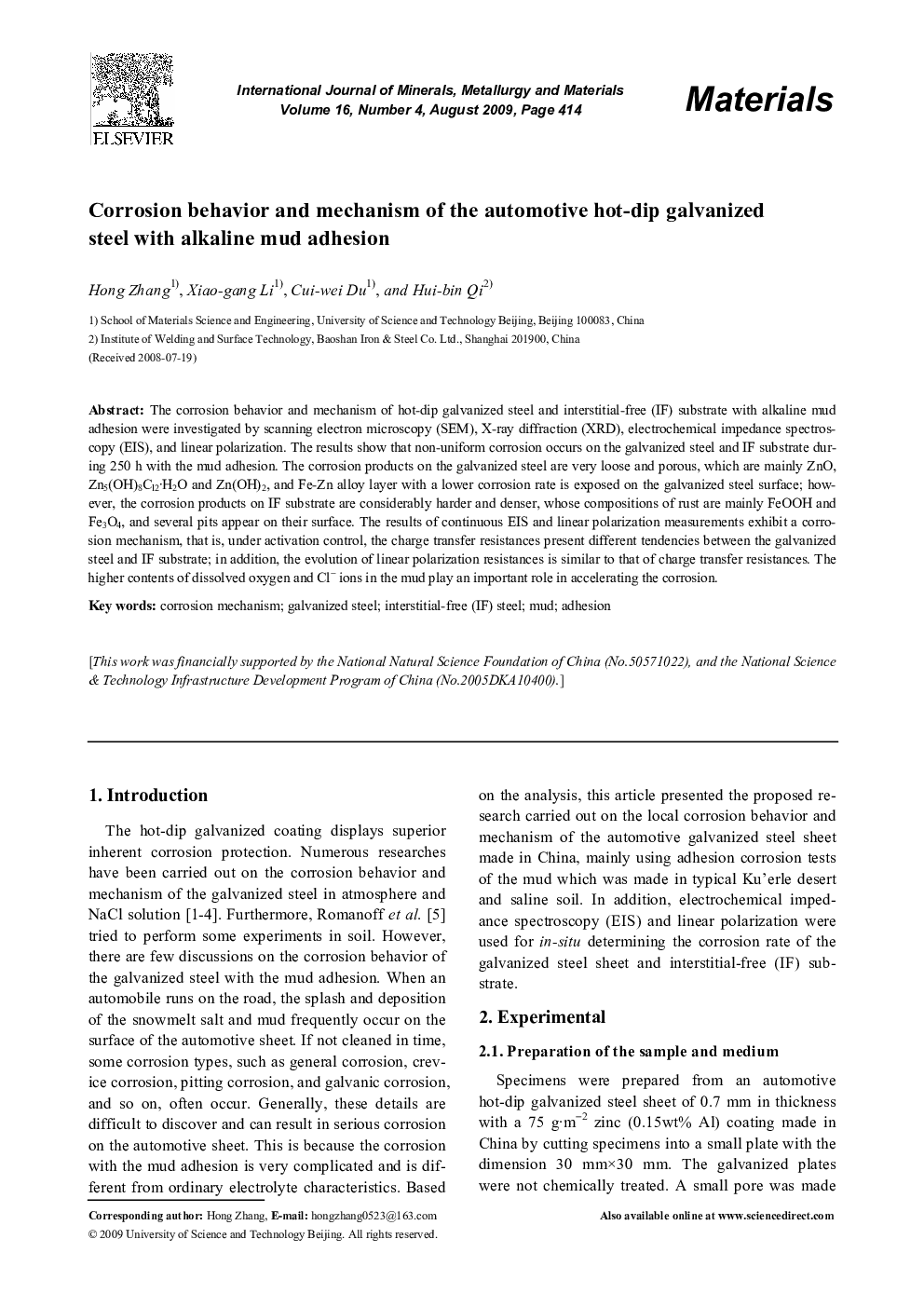| Article ID | Journal | Published Year | Pages | File Type |
|---|---|---|---|---|
| 1602422 | International Journal of Minerals, Metallurgy and Materials | 2009 | 8 Pages |
Abstract
The corrosion behavior and mechanism of hot-dip galvanized steel and interstitial-free (IF) substrate with alkaline mud adhesion were investigated by scanning electron microscopy (SEM), X-ray diffraction (XRD), electrochemical impedance spectroscopy (EIS), and linear polarization. The results show that non-uniform corrosion occurs on the galvanized steel and IF substrate during 250 h with the mud adhesion. The corrosion products on the galvanized steel are very loose and porous, which are mainly ZnO, Zn5(OH)8Cl2·H2O and Zn(OH)2, and Fe-Zn alloy layer with a lower corrosion rate is exposed on the galvanized steel surface; however, the corrosion products on IF substrate are considerably harder and denser, whose compositions of rust are mainly FeOOH and Fe3O4, and several pits appear on their surface. The results of continuous EIS and linear polarization measurements exhibit a corrosion mechanism, that is, under activation control, the charge transfer resistances present different tendencies between the galvanized steel and IF substrate; in addition, the evolution of linear polarization resistances is similar to that of charge transfer resistances. The higher contents of dissolved oxygen and Clâ ions in the mud play an important role in accelerating the corrosion.
Related Topics
Physical Sciences and Engineering
Materials Science
Metals and Alloys
Authors
Hong Zhang, Xiao-gang Li, Cui-wei Du, Hui-bin Qi,
